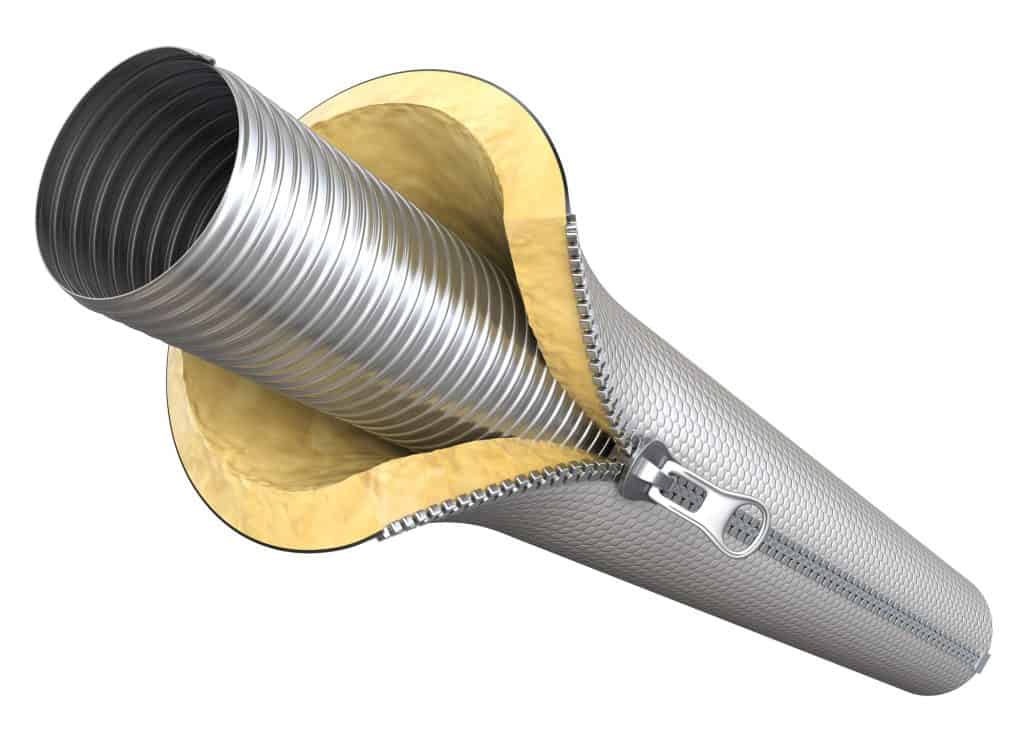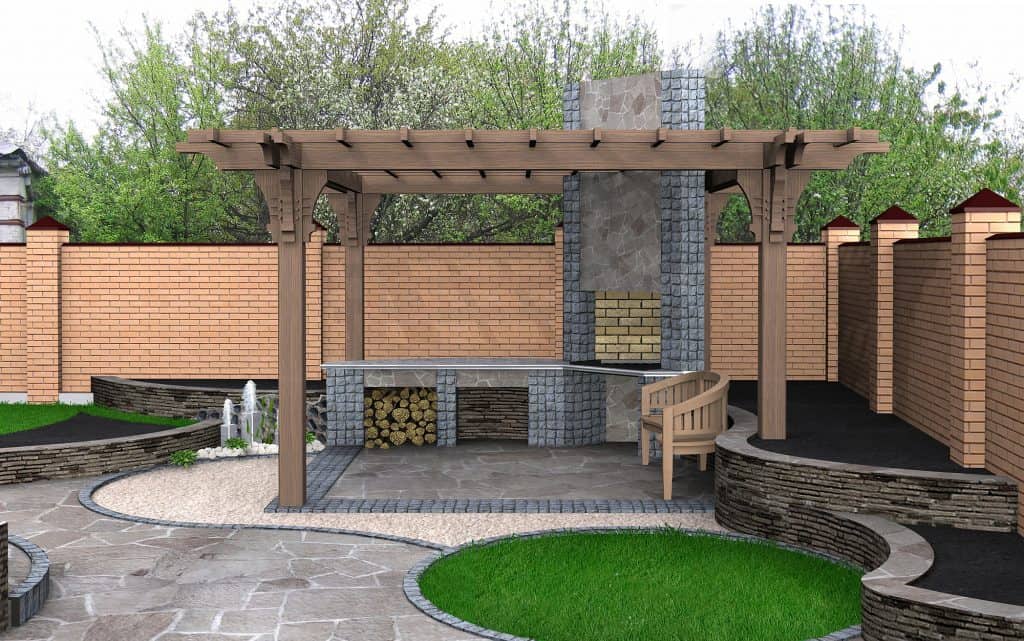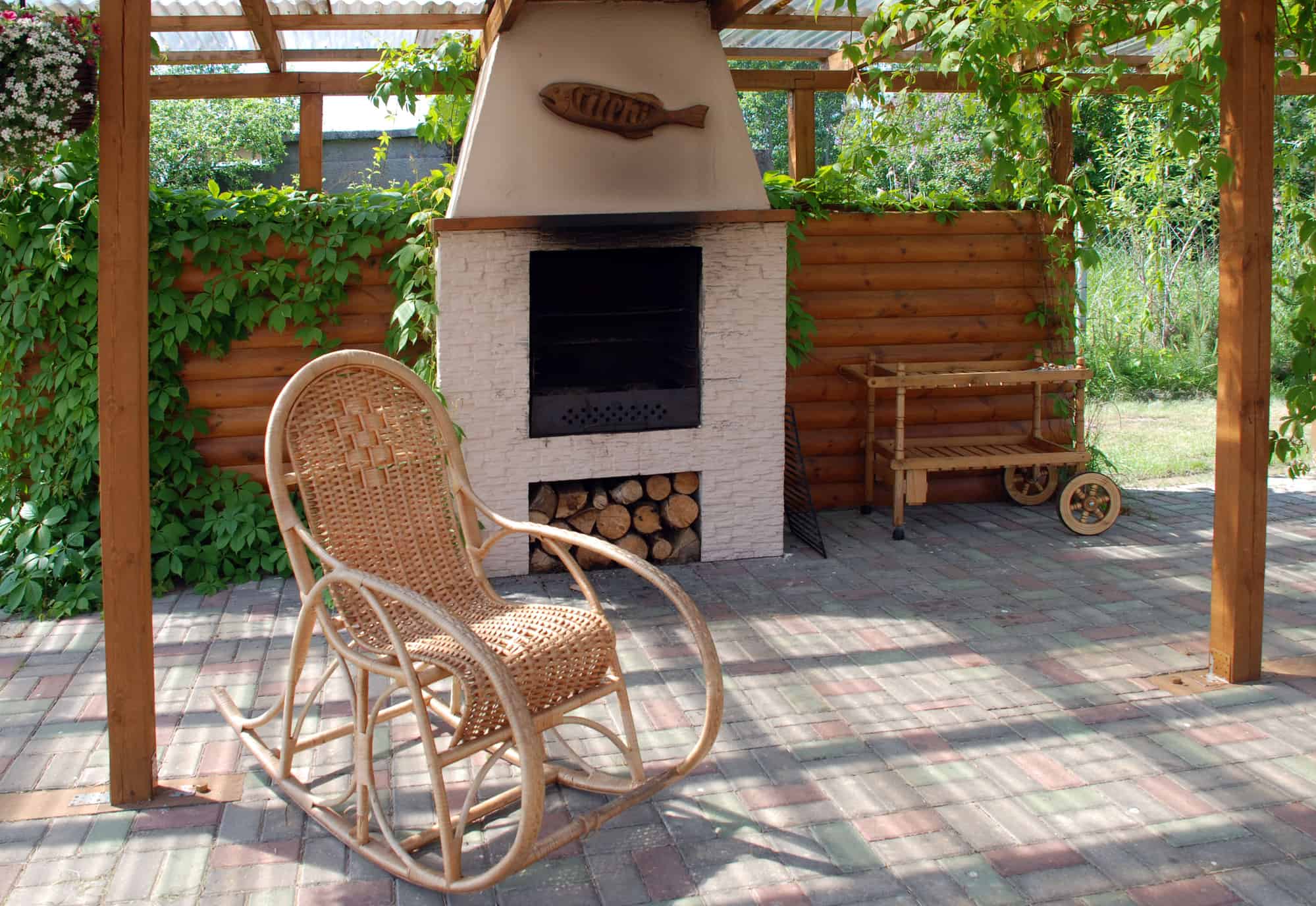A flue, or flue liner, is a hotly debated topic surrounding fireplaces. It’s universally agreed that a flue liner is non-negotiable in an indoor fireplace, but what about an outdoor fireplace? Does the change in the environment mean a flue liner is no longer necessary?
An outdoor fireplace does not always need a flue liner, but it’s a highly recommended addition. Having a flue liner helps improve draft and makes a stronger fire in an outdoor environment. Whether you need a flue liner or not will be based on overall ventilation and how your fireplace is constructed.
The rest of this article will cover everything you need to know about flue liners, including why they are important, how they work, and what they are used for.
Why Should I Use a Flue Liner in My Outdoor Fireplace?
You should use a flue and flue liner in your outdoor fireplace to improve draft and keep the fire going in any weather conditions. When outdoors, the wind can affect how well your fire burns, so a flue liner helps keep it going.
A flue liner is traditionally used in indoor fireplaces to improve draft and draw harmful chemicals such as carbon monoxide through the chimney and out of your house. They essentially take all the smoke and chemicals and transport them outdoors.

Keeping this in mind, it may seem as if an outdoor fireplace does not need a flue liner. After all, you are already outdoors, and the exhaust will not collect in an enclosed area. However, a flue liner will help if you’re having trouble keeping your fire burning.
How Do Flue Liners Work?
A flue liner is a layer inside your flue that improves draft and transports exhaust through the chimney to the outdoors. Because hot air rises, a flue liner draws the hot air from the fire up through the chimney and the opening of the chimney.
Flue liners work in conjunction with a fireplace damper — the damper sits below the flue and opens and closes to control airflow. The flue runs through the chimney vertically and transports exhaust up to the opening, while the liner protects the inside of the flue from chemicals in the exhaust.
Draft
Draft is the ability of your fireplace to take byproducts from the fire and bring them out through the opening of the chimney. If you have draft problems, it can lead to unsafe conditions. Draft problems lead to the gases from the fire not being expelled properly.
Many things can cause problems with a draft. One potential cause is the design of the chimney, while another cause could be that the flue is blocked. This is why it’s essential to get your chimney routinely checked and cleaned.
We learned in our article about smokeless fire pits that the hotter a fire burns, the greater amount of material is combusted. The opposite is also true, and a reduced draft will definitely cause a fire to burn with less heat.
The Stack Effect
Chimneys and flue liners work based on the principle of the stack effect. The stack effect is the scientific term for when hot air rises. This happens because the cool air is heavier than warm air. Therefore, when hot air rises in a house, it escapes through any openings. The same is true in a chimney.
Why Should I Use a Flue Liner in an Outdoor Fireplace?
You should use a flue liner in an outdoor fireplace to improve airflow. When outdoors, one strong burst of wind could affect the draft in your fireplace. A flue and flue liner helps control the draft and keep your fire burning evenly.
Another feature that helps control the draw of a fireplace is a smoke shelf. A smoke shelf sits above the firebox and keeps rainwater and debris from collecting in the fireplace. It also blocks wind from affecting the fire.
The Exception to the Rule
Some people claim you do not need a flue or a flue liner for an outdoor fireplace. This ultimately depends on the way the fireplace is built. Some masons build their fireplaces in specific ways, so a flue liner is not necessary.
Whether or not you need a flue and flue liner is up to you, but it is best to consult a professional mason to make that decision. If you are building the fireplace yourself, make sure to do ample research to make the best decision for your personal circumstances.
Chimney Safety

Chimney fires can happen if your chimney is not taken care of properly. Make sure you are keeping it clean to avoid the chance of a dangerous fire. It would be best if you also had it checked by a professional chimney sweep at least once a year because creosote buildup is not easily seen unless you are specifically looking for it.
Creosote
When burning wood, creosote is the byproduct. Creosote is formed by burnt wood particles and dried vapors within the chimney. It can build up on the sides of your chimney, leading to a fire hazard.
This material is flammable, so if too much builds up in your chimney, it can ignite. This is why it is imperative to get your chimney inspected regularly.
Soot
Soot is similar to creosote in that it is a byproduct of burning wood. However, Creosote is more of a tar-like substance, while soot is a powder. Both have adverse side effects on health and should be dealt with regularly.
Soot can be harmful if inhaled. Therefore, it is vital to get your chimney professionally cleaned to avoid the harmful effects of soot and creosote.
Conclusion
While fireplaces make a great addition to any outdoor space, you must make sure your fireplace is designed correctly to avoid negative effects. Most fireplaces need a flue and a flue liner to keep them functioning properly, even in outdoor fireplaces.
You can build an outdoor fireplace without a flue in rare cases, but it must be designed to accommodate this. It is also crucial that you get your chimney regularly cleaned and inspected.
All in all, a flue and flue liner are excellent options to keep your outdoor fireplace working at optimal performance.
Sources
- Full Service Chimney: What is a Fireplace Chimney Flue Liner?
- Full Service Chimney: Chimney Soot and Creosote Dangers
- Full Service Chimney: What is Creosote
- Hearth: Does an Outdoor Fireplace Need a Flue?
- DIY Outdoor Fireplaces: Is a Chimney Flue a Must?
- Hudson Valley Chimney: Is There a Difference Between Dampers and Flues?
- NC State University: Stack Effect- Defined
- Concrete Network: Outdoor Fireplace Design Criteria
- High’s Chimney Service: Chimney Anatomy: What You Need to Know
- CT Sweep: Chimney Drafting Problems

